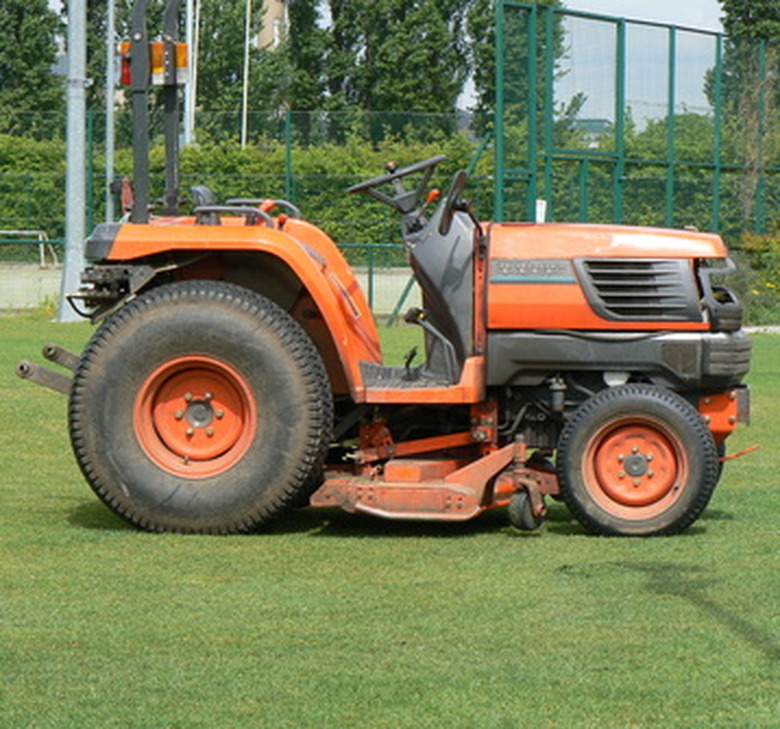Lawn Mower Tire Pressure
Maintaining tire pressure on lawn mowers is equally as important as maintaining the engine in terms of power, effectiveness and safety for the peak performance of the mower. While this is true, you may have overlooked tire pressure when doing routine maintenance on your mower. Lawn mower tires have the same needs and considerations as tires on cars or trucks.
Performance
Tire performance depends on the tire pressure. Often, the rear tires are larger for traction and power. The size difference causes the front tires to turn up to 5 percent faster so the front drive axle uses maximum efficiency. Tire rotation should be in an "X" pattern after 250 hours of use to improve wear. If one of the tires shows near 50 percent wear, you should rotate the tires.
- Maintaining tire pressure on lawn mowers is equally as important as maintaining the engine in terms of power, effectiveness and safety for the peak performance of the mower.
Reading Air Pressure
You can use various methods to read the tire pressure. Refer to the owner's manual to determine the correct tire pressure for both front and back tires. You can also look at the sidewall of the tire to find the suggested pressure. Tire pressure is measured as pounds per square inch, or psi. Use an accurate tire gauge to check the air pressure in each tire. Adjust the amount of air to meet manufacturer's guidelines. Make sure the tire pressure is equal on both sides of the same axle to keep the mower alignment straight to reduce the potential wear on any one tire.
- You can use various methods to read the tire pressure.
Safety
Mounting tires requires the proper amount of pressure for an inflated tire, and the proper knowledge to mount the tire. Explosions can be caused by accidental separation of the tire from the rim, overheating of the rubber, welding near the tire or inflating the tire from an incorrect position. Lawn mower tires should be inflated from the bottom and you should be at the side of the tire.
Distribution
Proper distribution of pressure is essential to having good traction. Poorly inflated tires affect quilibrium, steering and power. An example is the Scotts 1642 lawn tractor. Scotts indicates that 40 percent of the load distribution should be on the front tires with the remaining 60 percent on the rear tires. A lawn mower with a 15-inch front tire and 20-inch rear tires would have 10 psi and 14 psi, respectively.
- Mounting tires requires the proper amount of pressure for an inflated tire, and the proper knowledge to mount the tire.
- Lawn mower tires should be inflated from the bottom and you should be at the side of the tire.
Storage
During the off-season, tire pressure and storage are important. Tire pressure should be maintained between 10 and 14 psi. Cold temperatures reduce the air pressure in tires, over time. This loss in pressure creates stress on the rubber. Adding the weight of the lawn mower to the equation can lead to tire damage if you leave the tires on the mower during winter storage. Solutions include overinflating tires, checking tire pressure during the colder months removing the tires when you're storing the mower.
